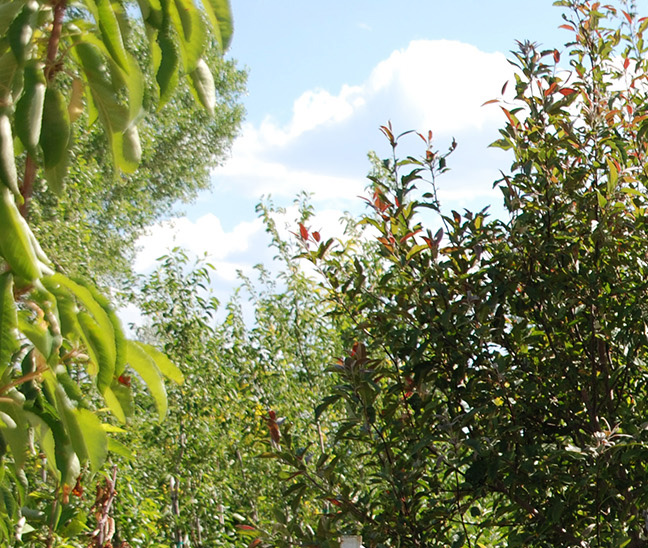Now that it's warming up and our apple trees are starting to bloom, it's time to talk about what to do about codling moths and their larvae, a.k.a. "apple worm."
Apple Worms
If you have apple trees, you've got to take measures to keep the codling moths under control. You may not have seen the moths or their larvae, but you've probably seen the damage the worms do to your apples. Adult codling moths begin to emerge as your apples are blooming, and they start mating and laying eggs almost immediately. Within a few weeks, their larvae start burrowing into your fruit. There are a lot of different approaches to codling moth control, the simplest of which include traps and sprays, beneficial predator insects, and thinning your fruit.
Traps
Set traps that will lure and capture the adult moths, eliminating them from the breeding population. Commercial codling moth traps are available at Petree's, or you can make your own with a 1:7 dilution of molasses and water in an open container that can be hung on your trees. Adding a little bit of liquid soap to the mix can help capture more moths.Sprays
Fruit tree sprays against codling moth are also available at Petree's. The active ingredient spinosad is natural, considered safe for organic production, and has minimal risk to beneficial insects. Spinosad-based sprays are used to kill both the adult moths and hatching larvae.
Natural predators
Natural predators of the codling moth include assassin bugs, green lacewing larvae, and certain wasps. It may not be realistic to expect predator insects to completely manage the codling moth population, but having them around is good support for the other things you're doing.
Thin and remove fruits
Larvae like to enter where two apples are touching, making overcrowded fruits susceptible to infestation. In addition, well spaced fruits are easier to cover with your spray. It's also helpful to remove fruits that are already infested, just to eliminate as many of the insects as you can from the population.



